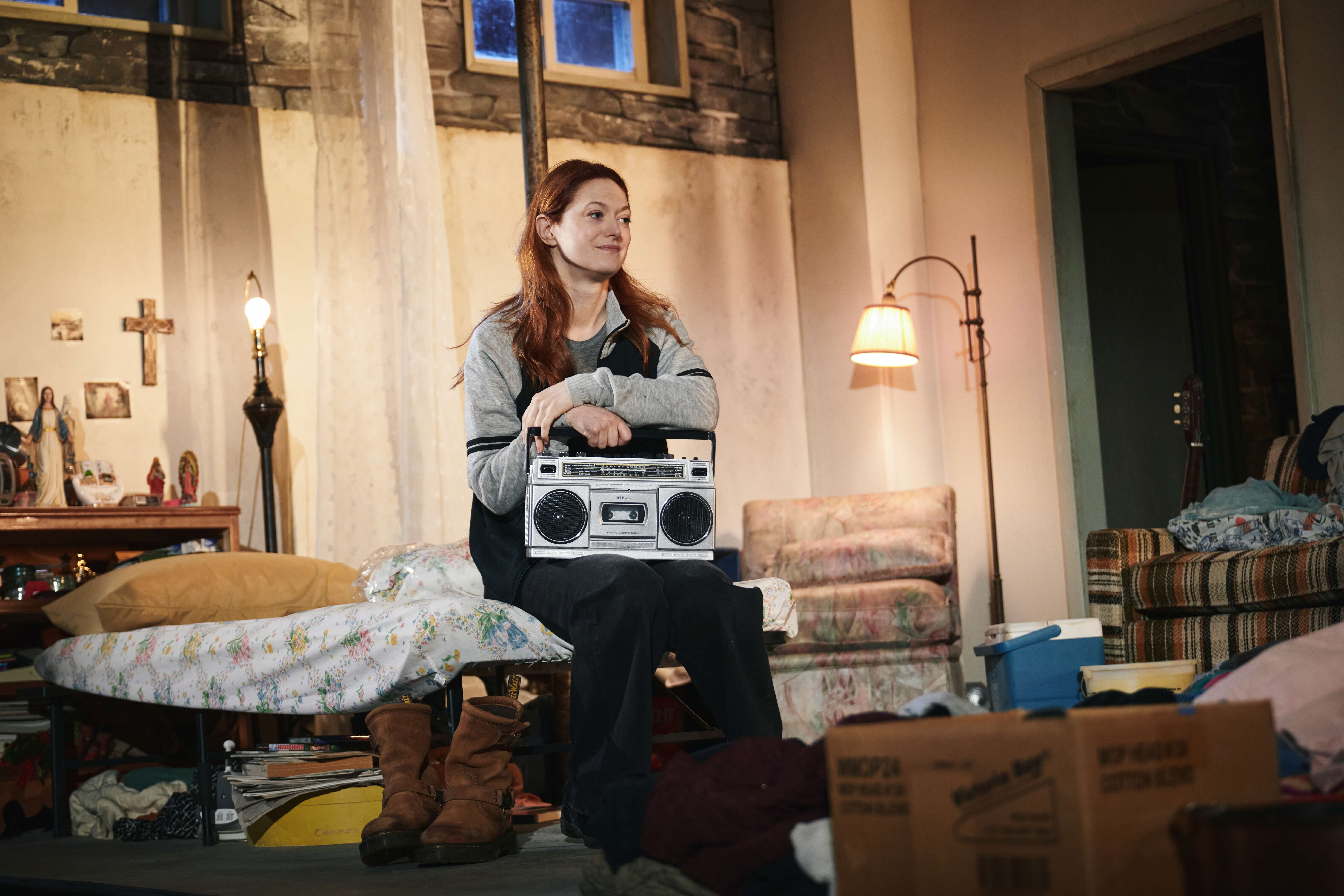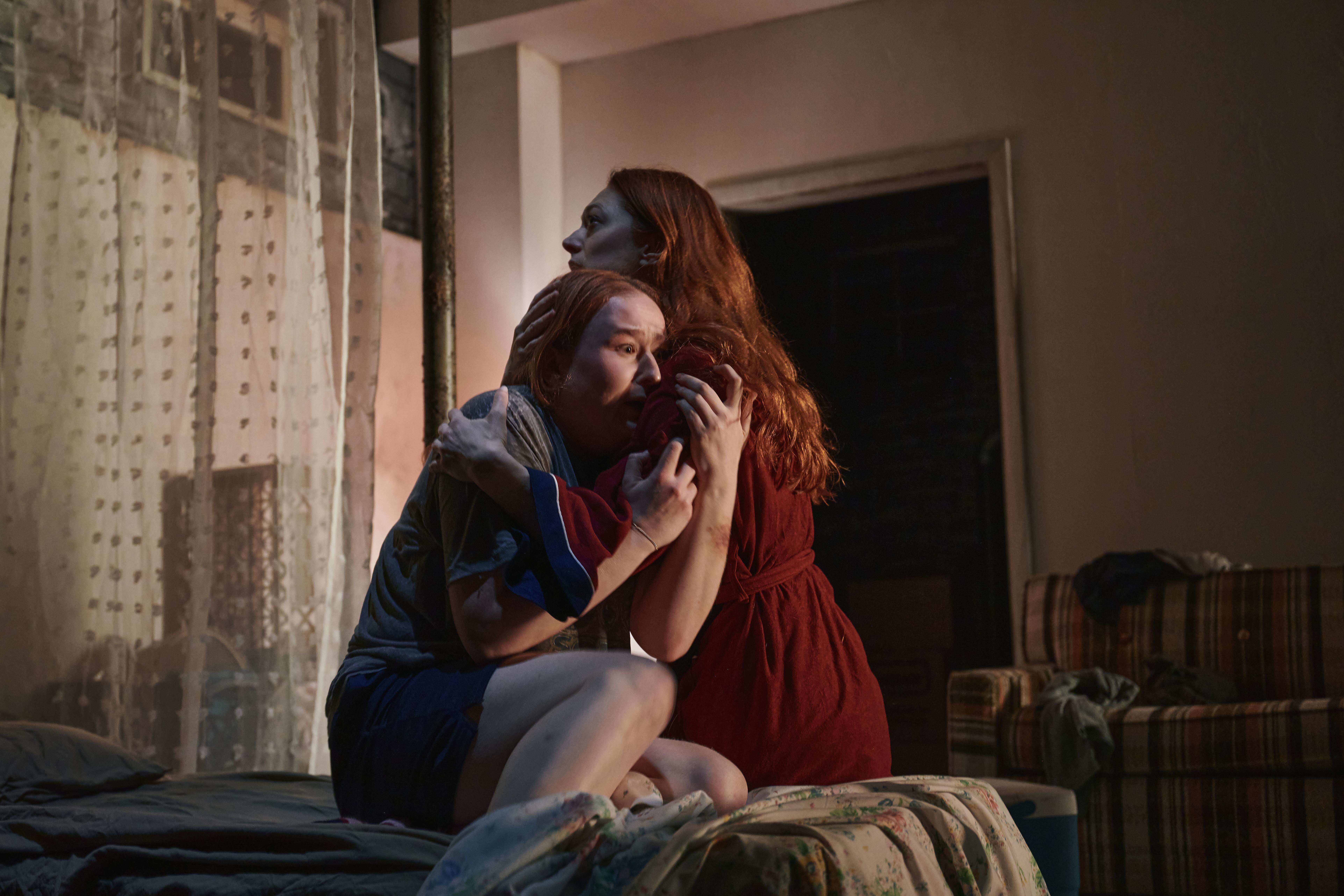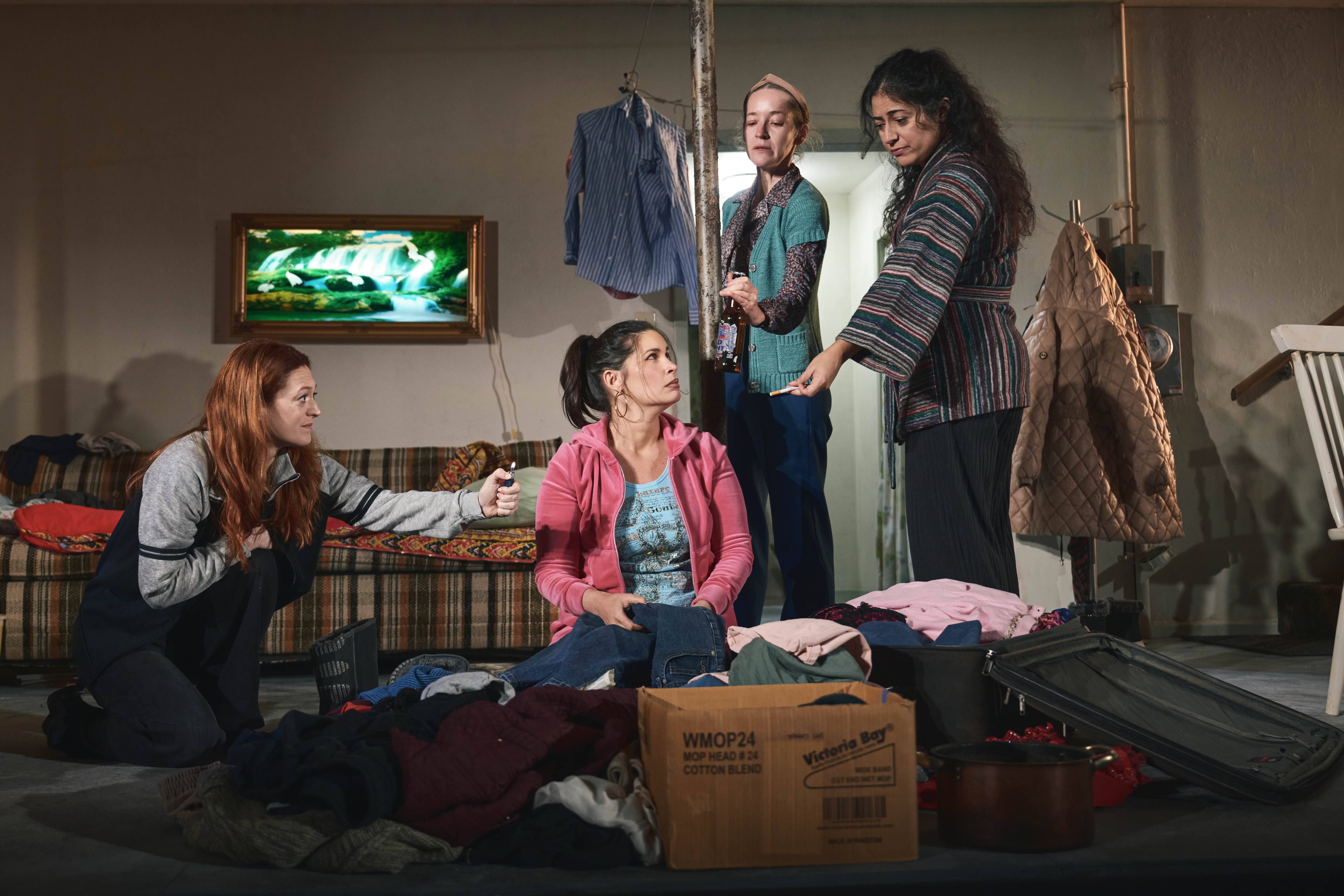
The set for Martyna Majok’s play Queens looks almost like a diorama. Designed by Marsha Ginsberg, it consists of an oblong, subterranean basement in Queens, NY, featuring makeshift room-dividing curtains, a flickering light, an exposed boiler, an old oven, a plaid couch, and a cot. It’s framed in such a way that it seems like the characters–immigrants from Poland, Afghanistan, Ukraine, Belarus, and Honduras–are living in a shoebox, or maybe even a museum display case. The play has an ethnographic quality to it, offering a glimpse into a way of life, as women try to survive underground, making ends meet in a new country that is far from welcoming.
Queens spans sixteen years and features a few timelines, but mostly takes place in the months after 9/11 and after Trump first took office. Various women find refuge in this Queens apartment, particularly Renia (Marin Ireland, excellent as always), who transforms from the newest resident to the self-crowned queen of the apartment. She lives with Aamani (Nadine Malouf), Isabela (Nicole Villamil), and Pelagiya (Brooke Bloom), a quartet that bonds in the aftermath of 2001, finding kinship in dark times.
In 2017, Inna (Julia Lester) arrives at Renia’s door in search of her mother, who left for America years ago. Mother-daughter relationships are central: Queens explores the difficulty, for mothers, of leaving, the desire to make a better life for their daughters, and the pain of being separated. In a particularly affecting moment, the cast recites overlapping voicemails to their daughters, pleading “don’t erase me,” and “if you play this message again, it can be like you talk to me.” The play offers no touching reunions, and in fact, almost all the mothers and daughters we meet have fraught non-relationships.

Majok, herself a Polish immigrant, has a deep commitment to her characters; in the script, she notes “self-pity has little currency in these characters’ worlds” and declares “no one is a caricature and everyone has dignity.” The women of the play are hard by necessity, but at times I felt too distanced, like I was observing something from afar rather than part of it. This may come down to Trip Cullman’s direction, which is wanting in intimacy.
Queens is from 2018, written between Majok’s Pulitzer-winning Cost of Living and Sanctuary City. Queens falls somewhere between the two dramaturgically, and although it plays with temporality, it never fully approaches the exciting experimentation of Sanctuary City. Majok extensively revised Queens for this production, including reducing the character count from 11 to 8 (likely still too many). She is also adapting the play for a miniseries, a medium that this story seems better suited for, since the additional time can give space and backstory to each of the characters.
In some ways, Queens feels like the inverse of Sanaz Toosi’s English, in which a group of Iranians learn English so they can move to America, all with overly optimistic ideas about the country and their future place in it. Queens lets us see what comes next, and reveals how frustratingly unsatisfying, difficult, unrewarding, and even unremarkable it can be. For Majok’s characters, the years go by, and they feel as though they have nothing to show for their time, nothing to have made it all worth it, nothing to have justified leaving their countries, and their daughters, behind.
Often, Majok turns the bittersweet pain of the immigrant experience into poetry, as when Renia describes coming to America, after a life full of “gray” and “so much Nevers,” and gorges on pineapple until her mouth bleeds. Or when the women note the various unexplainable ephemera left behind by former tenants: a box of clocks, bras, dolls without faces, photographs, hair, shoes, children’s clothes with tags still on them. Or when Renia reflects on the impossibility of staying connected to all you left: “Soon as you go from your country, you are gone. You say you gonna write, gonna call. They say they gonna call. But you become different. They don’t know what’s happening here, to you, how you live. And, after a while, you almost forget how they do. When you are not there, that it’s exactly what you are. Not there.”

Despite the production’s highly naturalistic design, the play doesn’t always maintain this level of realism or believability. Majok makes the apartment into a stand-in for the American melting-pot, but it seems more plausible that the Queens basement would be occupied by several immigrants from the same country, finding housing via shared community connections. Other choices feel a bit extreme, like having a character mention walking from Florida to New York. Likewise dialect is essential to the nature of the play, and though some, like Ireland, Bloom, and Anna Chulmsky (great, but under utilized) adeptly showcase their vocal skills, others, like Lester and Malouf, struggle. When one character ultimately becomes an apartment-destroying villain, almost heartless in her ambition, it feels unearned, unrealistic, and unsatisfying.
Throughout these sometimes rocky twists and turns, as timelines blend and bleed into each other, a pile of clothes remains center stage, packed and unpacked over the play’s 2 hours and 15 minutes. It becomes a makeshift clothing drive, a leave-a-penny, take-a-penny for shirts and sweaters. The pile is a testament to all the women who lived in this basement and who left behind a legacy, an offering for the next woman who shows up, having quickly fled somewhere, in need of something to wear. The pile is the play’s simplest and quietest gesture, but it is also its most impactful, and the one that is likely to stay with you–it is the haunting heart of this powerful portrait of immigrant life.
--
Queens is produced by Manhattan Theatre Club and plays at New York City Center Stage I through December 7.

